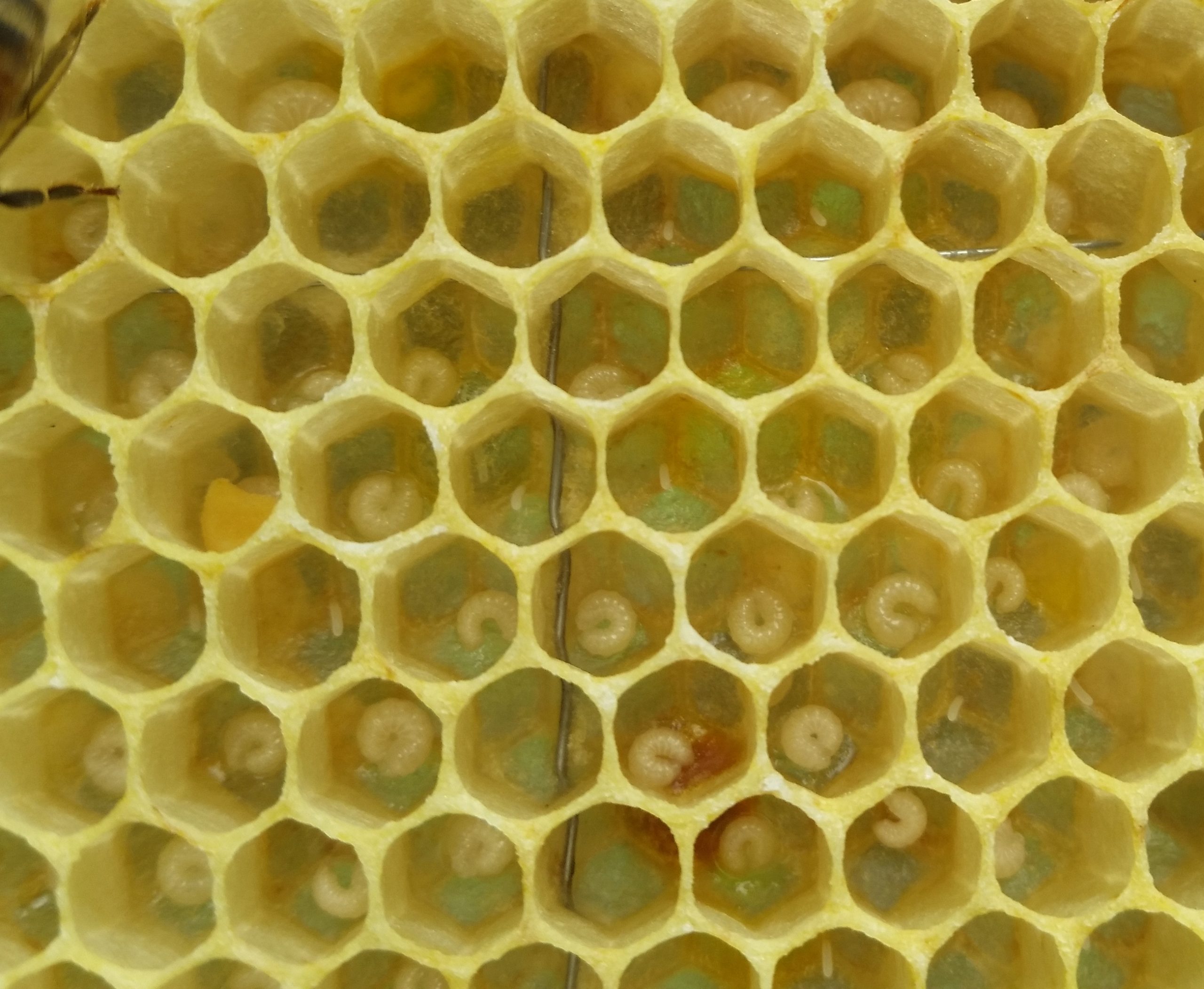
Which is Better . . . Packages or Nucs?

Which is Better . . . Packages or Nucs?
Wet Brood & Dry Brood


Eggs are eggs for 3 days & feed themselves from yolks. On the 4th day of their lives they turn into larvae. On days 4 & 5 all larvae is fed royal jelly. If they don't need a queen, all workers & drones will be fed bee bread until their cells get capped (9 days for workers & on 10th day for drones). Queens are fed only royal jelly until their cells get capped (8th day).
Royal jelly is produced in the hypopharyngeal glands of nurse bees. It is rich in nutrients. Royal jelly is composed of 67% water, 12.5% crude protein, small amounts of many different amino acids, 11% simple sugars (monosaccharides), and fatty acids (5%). The main acid is the 10-hydroxy-2-decenoic acid or 10-HDA (about 2 - 3%). It also contains many trace minerals, some enzymes, antibacterial and antibiotic components, pantothenic acid (vitamin B5), vitamin B6 (pyridoxine) and trace amounts of vitamin C.

Wet Brood

Dry Brood
A good way to tell if your bees are getting enough food & nutrients is to look at the young 4 & 5 day old larvae. They should be swimming in royal jelly. This is called wet brood. If your young larvae looks dry or has small amounts of royal jelly (dry brood), your bees are starving & cannot produce enough royal jelly to feed to the larvae. If this condition continues, they will cannibalize the young to conserve resources & to obtain protein for themselves.
Larvae are eating machines. They need to be fed constantly & grow about 800 times larger than their original size within 5 days!
In the West Virginia region, nectar dwindles around July 15th. There are some late blooming crops such as clover, alfalfa, and buckwheat. However, most natural resources for nectar are low or non-existent. Your bees will naturally start to decrease their population. 1:1 sugar water imitates a nectar flow and will supply your bees with carbohydrates and encourage them to keep rearing brood.
The bees that will be born in August & September will be your over-wintered bees. Do not let your population build-up be interrupted by starving bees. You need a very strong hive going into winter. Late summer & early fall are also critical times for varroa mite infestations. Mites take advantage of hives diminishing in size. Small hive beetles & wax moths take advantage of weak hives also.
Do not let your bees starve. Monitor nectar & pollen intake. Observe young larvae for royal jelly. If they do not have enough natural resources, you must feed your bees supplements (sugar water & pollen patties). Bees need both carbohydrates & protein to be able to rear brood.

























